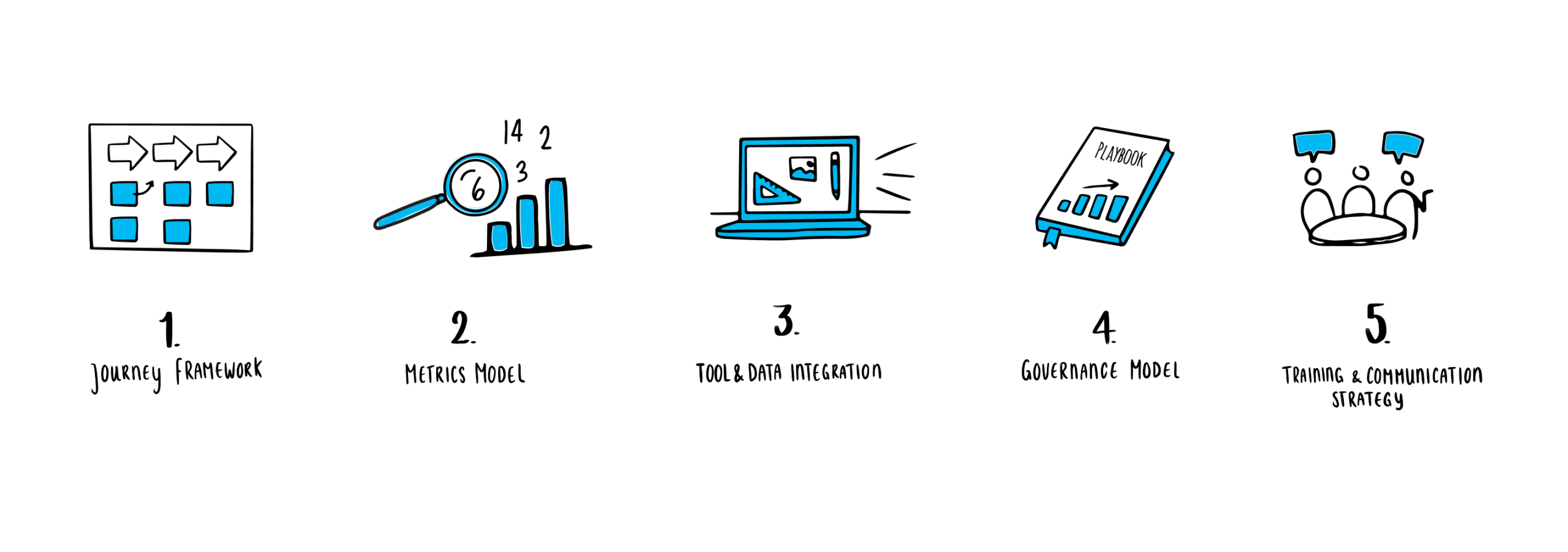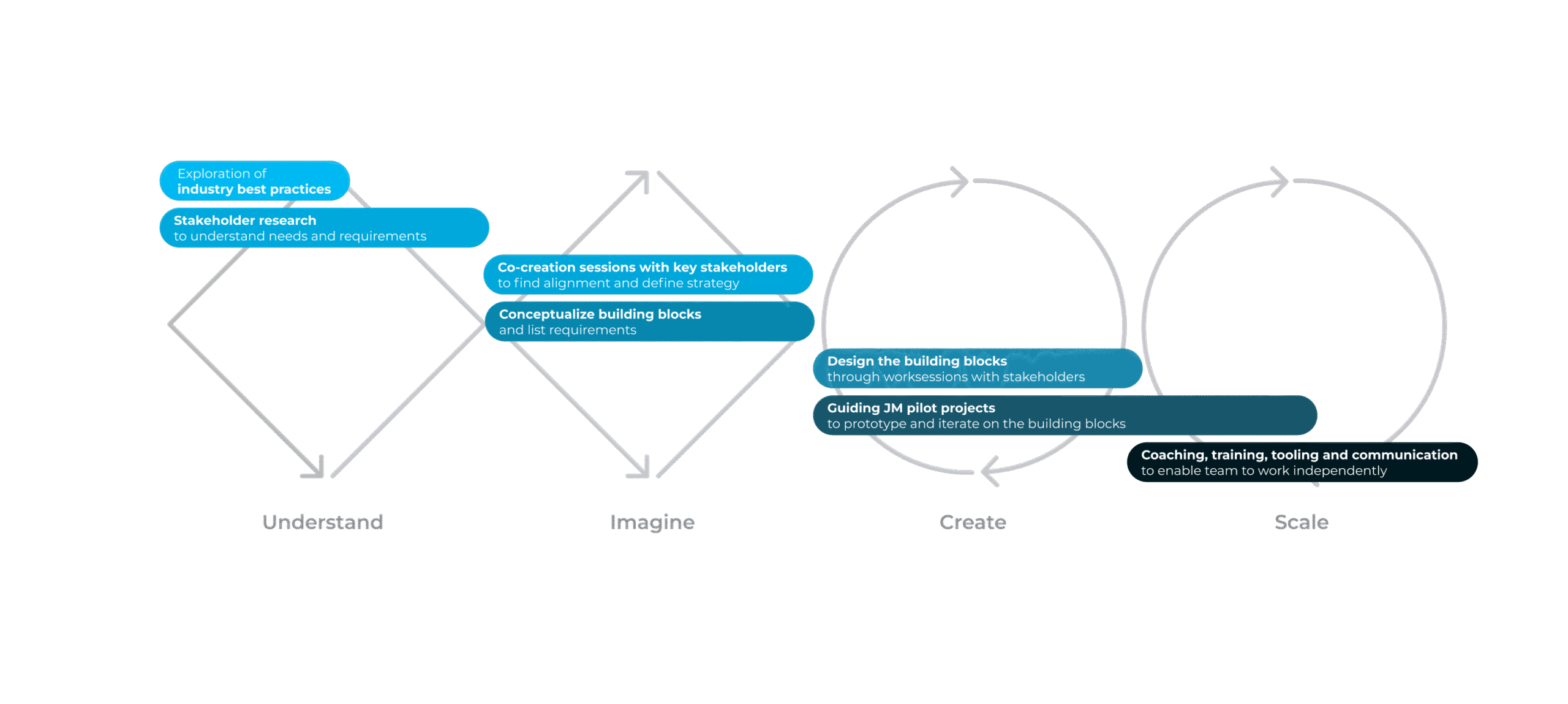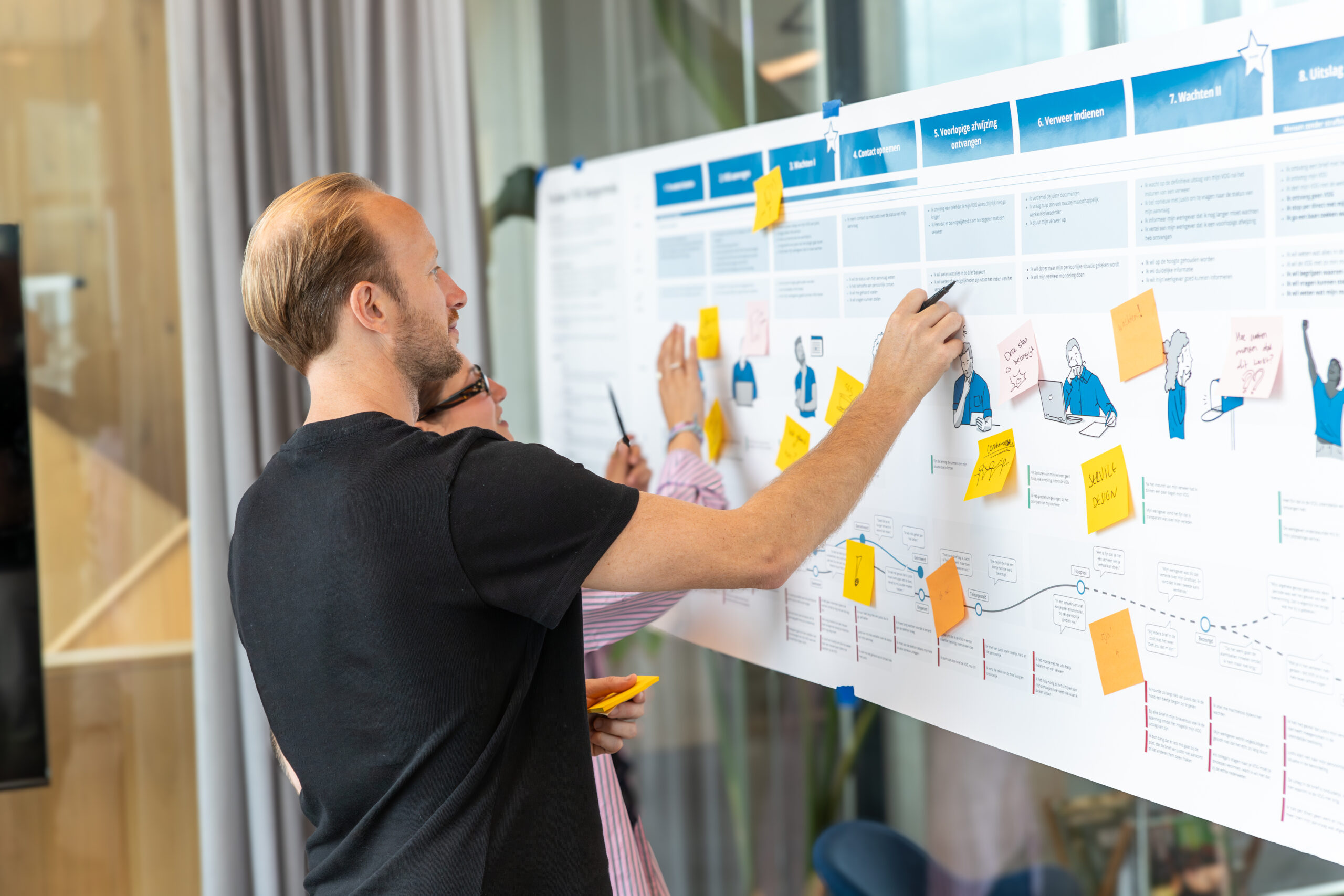Why is Customer Journey Management valuable for organisations?
At its heart, Customer Journey Management (CJM) is about mastering the customer experience. It is both a strategic mindset and a powerful tool, providing a clear overview and deep insights to help organisations monitor, optimise, and align every customer interaction across all touchpoints and internal teams.
Implementing Journey Management within your organisation unlocks the potential to boost both customer experience and business goals.
Before diving into implementation, you should read our blog to learn about what is customer journey management and its core benefits.
How to tackle implementation challenges
You might be thinking, “This sounds promising, where do I start?”.
However, despite its obvious benefits, organisations frequently encounter challenges when trying to implement journey management. These challenges, in our experience, typically revolve around:
- Internal resistance: When introducing journey management, CX champions often run into internal resistance to new ways of working. Organisations may be tired or afraid of reorganisations and new buzzwords. This often makes it challenging to rally enough internal support.
- Organisational complexity: Dealing with the complexities of large organisations creates challenging environments for implementation. It is common to find siloed teams and conflicting KPIs, which can make it tough to align efforts across the entire organisation.
- Difficulty proving value: It can be hard to connect customer experience improvements to bottom-line results directly. Proving the tangible value of journey management can be challenging, making it hard to secure leadership buy-in.
Sounds familiar? While implementing Journey Management certainly comes with its hurdles, it also holds the key to overcoming them.
By establishing and following the five essential building blocks we introduce next, organisations can navigate these challenges more easily and unlock the full potential of Customer Journey Management.

The 5 building blocks to implement Customer Journey Management
At Koos, we believe the best approach to make customer journey management stick within an organisation is to follow five building blocks. These lay the foundation of successful journey management implementation:

1. Journey Framework
What it is:
A journey framework is a holistic overview of the complete service or product delivery, going beyond a single static customer journey.
The customer experience is described on multiple levels: the full customer lifecycle (master journey), key phases such as the onboarding experience (macro journeys), and smaller tasks like paying a bill (micro journeys). A journey framework not only provides a complete overview of the current customer experience but also describes the relationships between those journeys.
Value:
Having a journey framework is a powerful tool for aligning teams by creating a common understanding of the user experience and how their roles fit into it. It helps individuals and teams understand the bigger picture, see interdependencies, and avoid double work.
In action:
For Digicel, the largest telecom in the Caribbean, we designed an end-to-end customer experience that converges all lines of business and channels using a customer journey framework built on macro and micro journeys. The journey framework enabled the development of a standardised, customer-centric approach across markets, channels, and products.
2. Metrics Model
What it is:
A metrics model is an agreed-upon set of metrics aligned with the overarching CX strategy. These can include CX metrics (such as CSAT), behavioural metrics (like conversion rate or clicks to complete a task), or business metrics (like revenue per customer or churn rate).
Value:
A metrics model allows for making data-driven decisions regarding CX efforts by measuring user experience and business performance. Additionally, it aligns teams around shared goals, enables fast learning and iteration, and allows CX-oriented teams to prove business impact and calculate the return on investment for innovation efforts.
In action:
For Santeon / Zorg bij Jou, a healthcare organisation, we took a pragmatic approach by directly quantifying patient needs and pain points across the journey. This allowed us to identify and make recommendations on allocating resources to go after the most impactful opportunities to guide the self-monitoring service’s roll-out and (re)design.
3. Tools & Data Integration
What it is:
For successful journey management, organisations need to move beyond static documents. By utilising easy-to-use management tools like TheyDo, Smaply and Milkymap, we can translate static customer journeys into dynamic, collaboratively managed documents.
Value:
Journeys become living documents which real-time monitor your CX performance based on the set metrics with the help of data integration. The right tool enables continuous and collaborative monitoring and management of the customer experience, optimising decision-making.
In action:
In many of our projects, including Dutch Railways and VGZ, we implemented and leveraged the journey management tool TheyDo. By translating existing journeys within the organisation into TheyDo, and adding metrics to the journey steps, we were able to transform static journey maps into dynamic, actively managed documents.
4. Governance Model
What it is:
Your organisation’s established rules and ways of working for Journey Management. This includes:
- Organisational structure: Tailoring the structure for cross-functional collaboration and informed teams.
- Roles & responsibilities: Clearly defining who is accountable for specific journeys or phases (e.g., a “lead” for a cross-journey perspective, “journey owners” for specific journeys, and various specialists like designers or data analysts informing them).
- Rituals & rhythms: Structured meetings and recurring check-ins for alignment and progress tracking (e.g., incorporating into existing agile meetings rather than creating new ones).
- Practice: Establishing a continuous cycle of researching user needs, prioritising improvements, implementing them, and evaluating results.
Value:
Applying a governance model creates a clear, collaborative, and effective way to manage journeys, overcoming organisational complexities.
In action:
As part of our partnership with the Dutch Railways (NS), we collaborated closely with diverse stakeholders to co-create a governance model for journey management. We introduced the strategy and implementation across multiple departments, fostering alignment and ownership.
5. Training & Communication Strategy
What it is:
Training and communication strategy mean building a common understanding of journeys and journey management across the organisation. This involves capacity building to equip employees with the necessary skills and understanding of tools and guidelines.
A “playbook” is a powerful tool to support this, offering a clear and comprehensive guide to how journey management operates within the unique framework of an organisation. It ensures that everyone is aligned, aware of their roles, and understands their responsibilities.
Value:
A solid communication strategy and capability training ensure consistent communication, foster a customer-centric culture, and support continuous learning and refinement of the customer journey management process.
In action:
For VGZ, we developed a program to build support and enhance capabilities for implementing their new organisational structure with a strong customer focus. Beginning with small, concrete projects, we gradually engaged more teams, fostering adoption of the new way of working across the organisation.
The design approach for transformation
As Customer Journey Management is a transformation process, its success depends on implementing it with a design mindset. This involves following the Koos Approach for innovation, our improved version of the Double Diamond Approach.

- Understand: Conduct stakeholder interviews to grasp their needs, challenges, and requirements, and analyse existing customer research and data. Look at industry best practices.
- Co-create: Design the framework and governance model collaboratively with core teams and stakeholders in work sessions.
- Create: Run pilot projects (e.g., MVP thinking) to test prototypes and gather feedback for iterative improvement.
- Scale: Enable teams to work independently, providing coaching, training, and ongoing communication.
This iterative and collaborative approach, grounded in empathy, co-creation, and iterative refinement, increases the likelihood of successful adoption and continuous improvement. Start with small, easy wins that can quickly demonstrate value and generate buy-in from leadership, paving the way for a broader organisational transformation. Our collaboration with NS shows this approach in action.
From Journey Management Framework to real results
To implement Customer Journey Management, you need alignment across teams, a clear framework, and proof of impact to win long-term support. By addressing internal resistance with a shared language, breaking down silos through governance and tools, and linking customer insights to measurable results, organisations can move from ambition to action.
At Koos, we have seen that when these elements come together, journey management shifts from a theoretical ideal to a practical driver of change. With the right building blocks in place, you are not just managing journeys, but creating a customer-centric organisation that can adapt, scale, and thrive.

Ready to turn your journey management vision into reality?
We can help you embed journey management from the ground up. From building the right foundation to scaling across teams, our experts support your full transformation.
Let’s discuss how you can benefit from our Journey Management approach.


